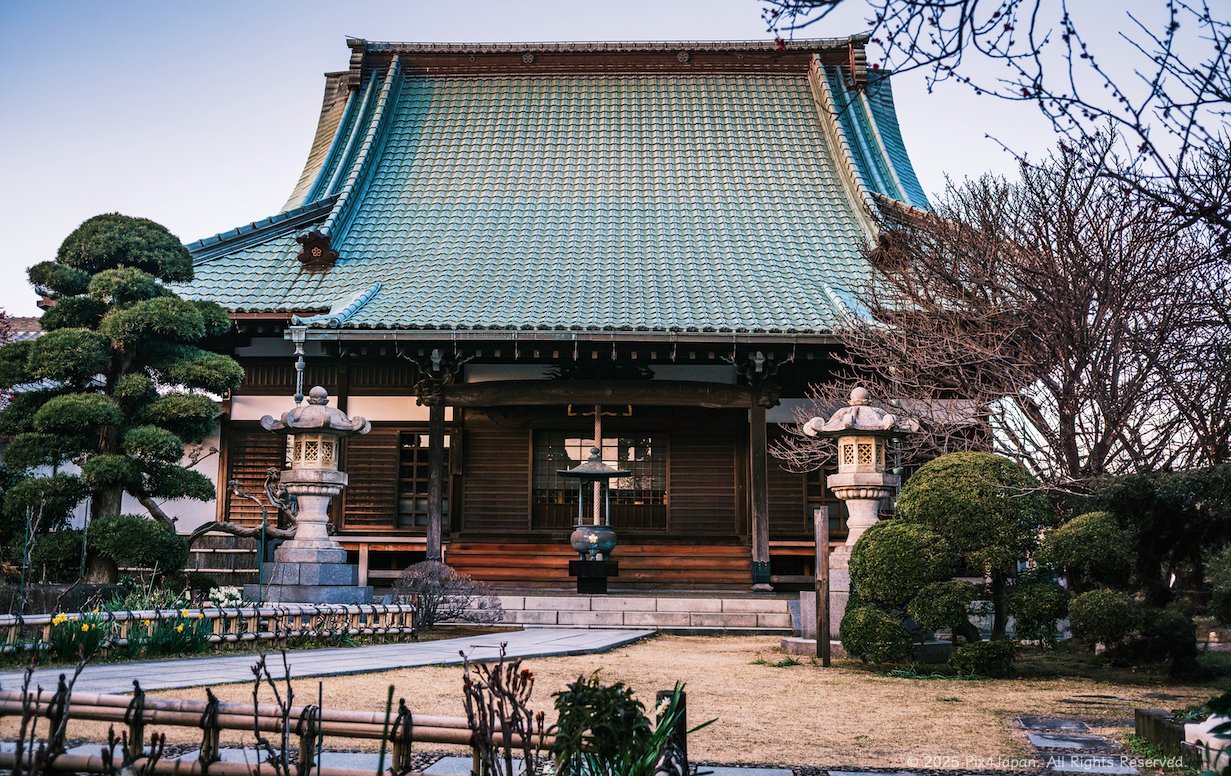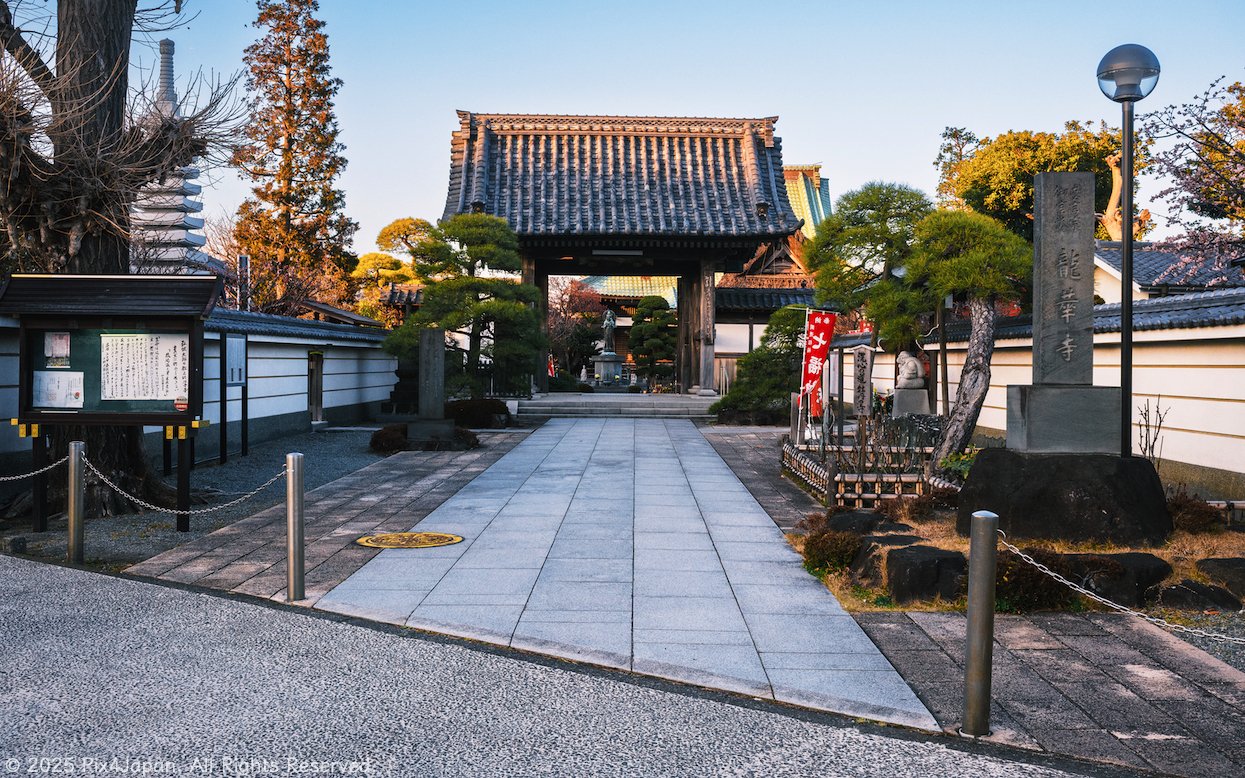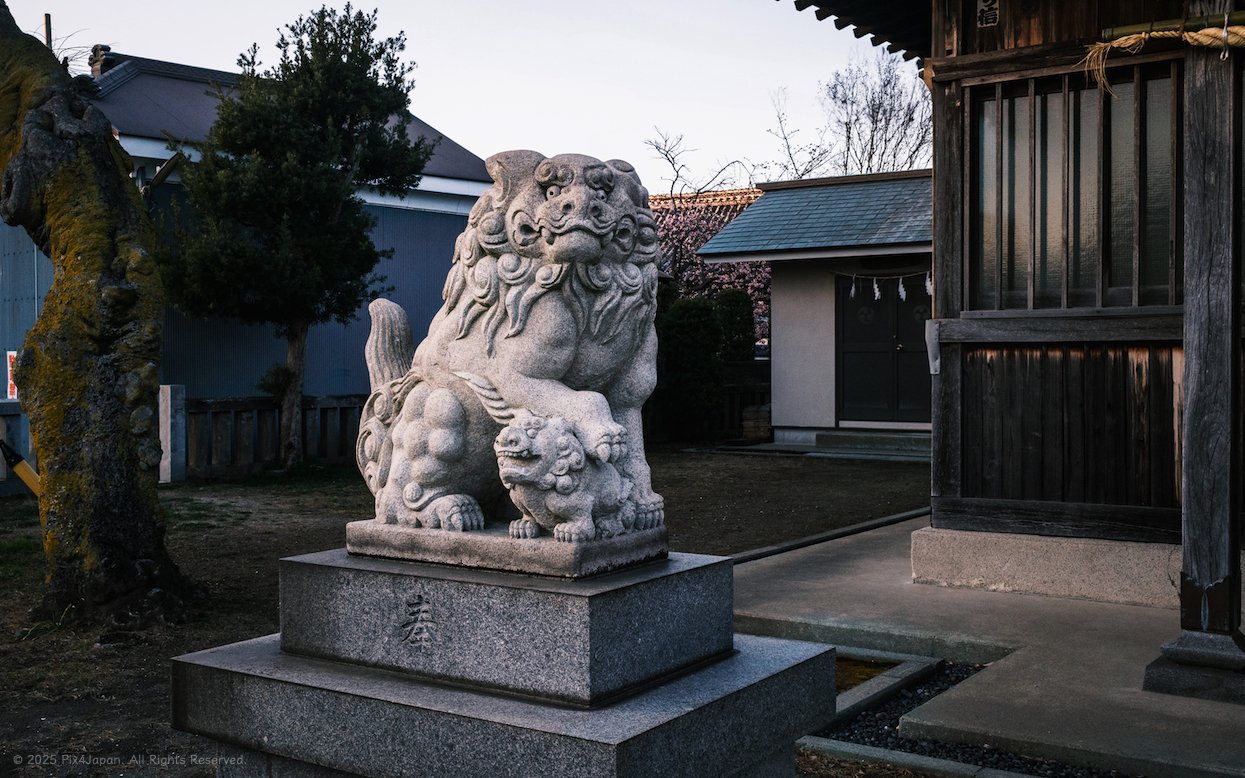
Ryūge-ji Temple
The main hall at Ryuge-ji Temple in Kanazawa Ward, Yokohama, Japan—a historic site founded in 1189 in the Mutsuura mountains. After the original structure burned in 1499, it merged with two neighboring temples, forming the present-day complex. This tranquil Buddhist sanctuary has endured for over 830 years, blending spiritual heritage with the local residential urban landscape.

Bell Tower
A wooden bell tower in the courtyard of Ryuge-ji Temple, Yokohama, Japan. Built with stout corner pillars and an open design, it houses a large bell hung from a central beam. This style dates back to the 13th century. The thatched roof, once common, is now a rarity, with clay tiles more prevalent today.

Fudōmyō-Ō
A small vermilion shrine housing a statue of the Buddhist deity Fudomyo-O, or the Immovable Wisdom King. Although located within the grounds of Ryuge-ji Temple in Yokohama, Japan, the shrine’s architecture closely mirrors that of traditional Shinto hokora, blending the two traditions of Buddhism and Shintoism in a peaceful garden setting.

Sanmon Gate
A peaceful view of a stone-paved path bordered by a white wall with traditional roof tiles, leading to a large wooden sanmon gate with a gabled tiled roof. Here, visitors and worshipers pass from the secular world into the serene, sacred grounds of the Buddhist temple.

Komainu
A stone lion-dog (komainu) stands guard in the quiet courtyard of a traditional Shinto shrine in urban Japan. Its powerful mane, sharp claws, and fierce expression embody protection and strength, while the small cub beneath its paw symbolizes care. A moss-covered tree, the wooden exterior of the shrine, and a straw shimenawa rope evoke a sense of history and reverence, all beneath the soft light of a chilly winter evening during blue hour.